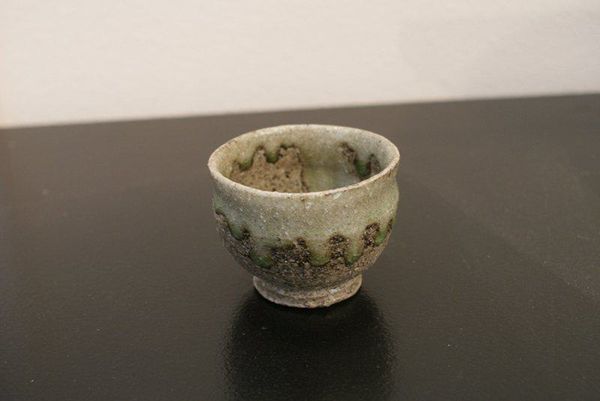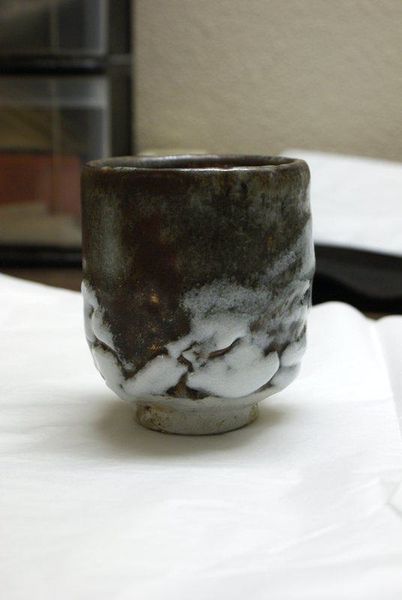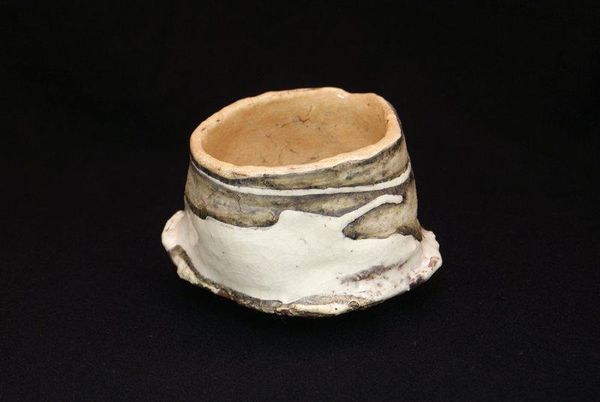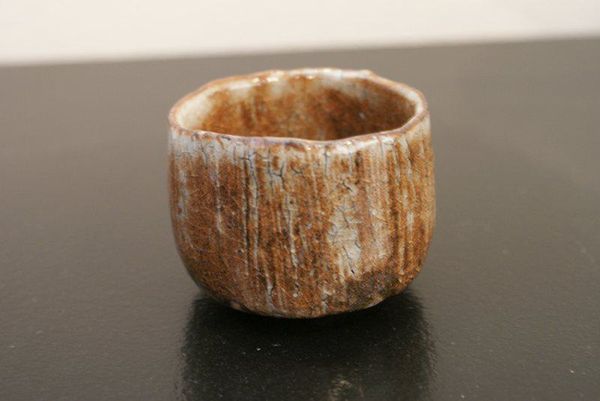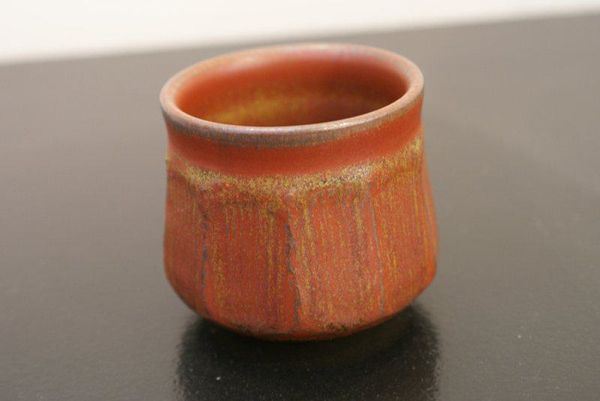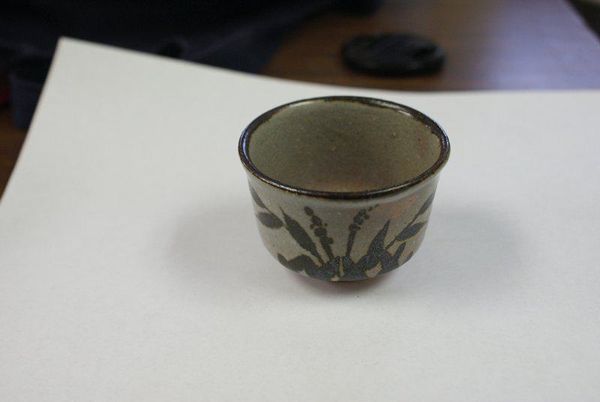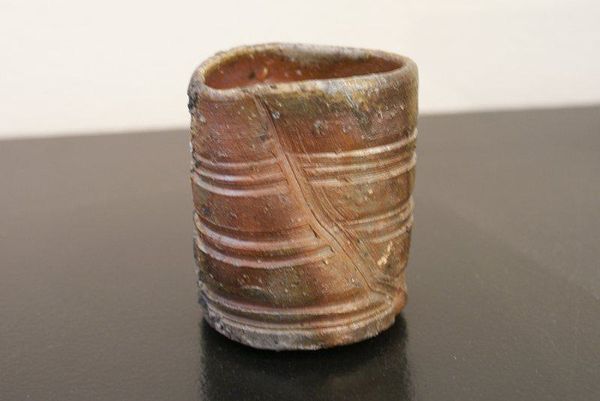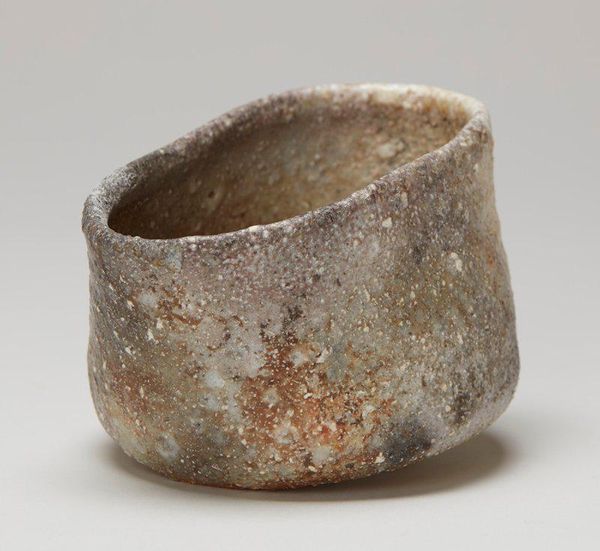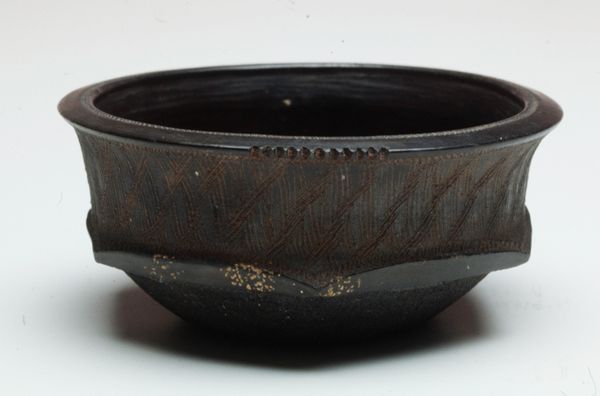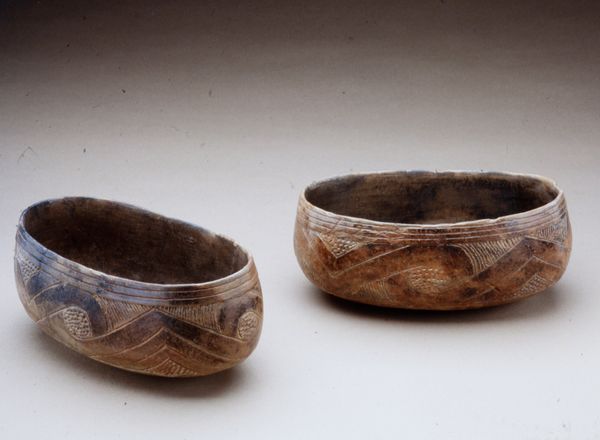
ceramic, earthenware
#
asian-art
#
ceramic
#
earthenware
#
stoneware
#
ceramic
#
earthenware
Dimensions: 2 × 2 7/8 × 3 in. (5.08 × 7.3 × 7.62 cm)
Copyright: No Known Copyright
Editor: This is a stoneware sake cup, or guinomi, by Nishihata Tadashi, probably made in the late 20th or early 21st century. It's incredibly tactile; the rough, earthy texture juxtaposed with the smoother, glazed top creates a strong visual and physical contrast. How do you read this object? Curator: Well, considering its function as a sake cup, we must consider the cultural context surrounding sake drinking and its rituals. The roughness you noted is no accident; it rejects the hyper-refined aesthetic sometimes associated with traditional crafts. I’d argue Nishihata is deliberately embracing *wabi-sabi*, finding beauty in imperfection and transience. Does the form or materiality perhaps echo pre-industrial modes of being, implicitly critiquing contemporary consumer culture? Editor: That's interesting! So, by embracing imperfections, the artist might be making a subtle statement about rejecting consumerism and idealization? Curator: Precisely! The very act of slowing down to appreciate the nuances of this handmade object can be seen as resistance. Sake, in this context, transcends mere beverage. It's a tool for social cohesion, yet here, individualized in a uniquely textured cup, suggesting a meditation on the self within the collective. What kind of user is implied, in your view? Editor: Someone looking for a deeper, more meaningful experience, maybe even a bit of solitude. This wasn't designed for mass consumption. Curator: Agreed. And through that quiet act of rebellion, it creates its own significance. Editor: I hadn't thought about the implications of "imperfect" craftsmanship in that way. Thanks! Curator: It’s about acknowledging the political weight carried even by simple objects. Food, drink, and communal rituals... they're all interconnected.
Comments
No comments
Be the first to comment and join the conversation on the ultimate creative platform.
